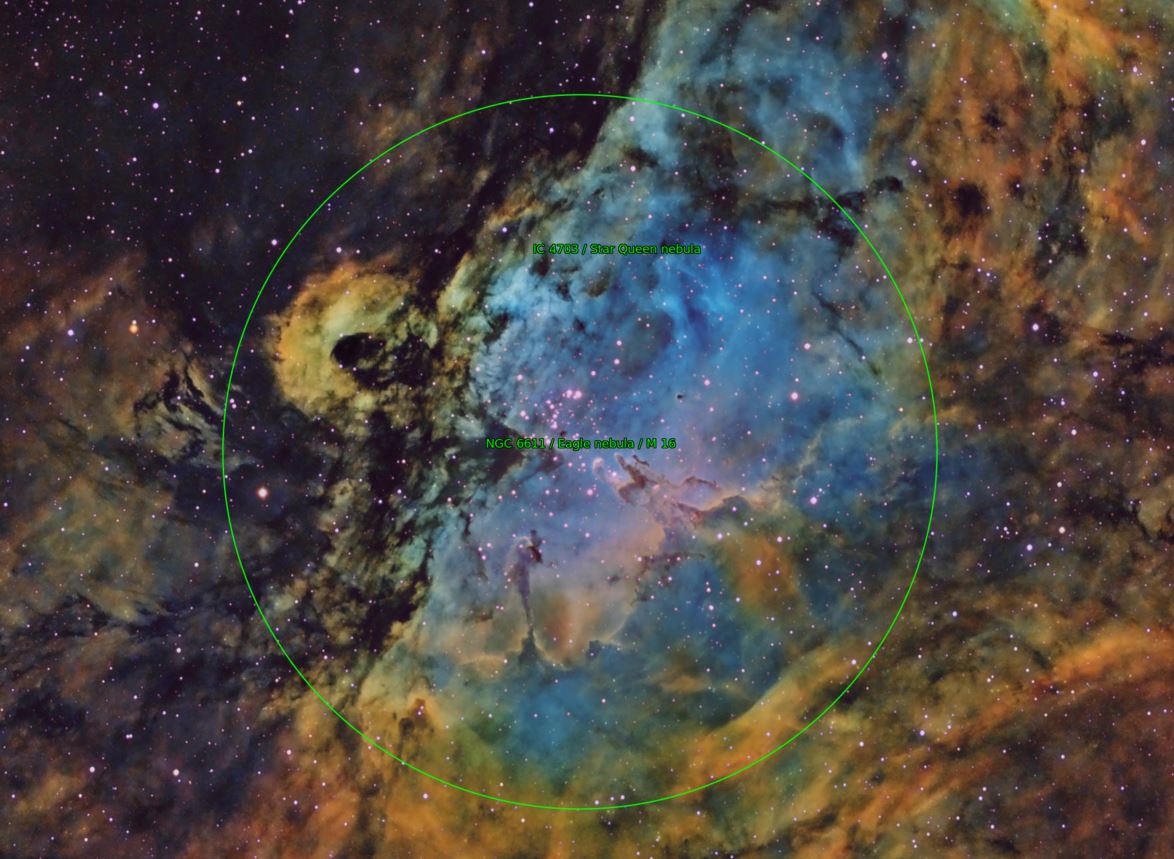Get Lost in This Jaw-Dropping View of the Eagle Nebula

It's easy to get lost in this jaw-dropping snapshot of the Eagle Nebula, which offers a high-resolution view of an incredible space landscape.
The Eagle Nebula is a massive collection of gas and dust, which serves as fertile soil for the birth of new stars. The blue, lagoonlike region at the center of the image contains the iconic, fingerlike structures known as the Pillars of Creation. The blue, green and red indicate the presence of different gasses.
The image was created by a collaboration of four astrophotographers, and is composed of 177 individual frames, with a total integration time of 32 hours. The group members are Terry Hancock of Michigan (whose sky images have been featured on Space.com many times before), Gordon Wright from Scotland, Colin Cooper, Spain; and Kim Quick, Florida. The full-size image is almost too much to take in all at once, so viewers are encouraged to zoom in and get lost in the details of this incredible snapshot.
The Eagle Nebula is about 7,000 light-years from Earth, and is approximately 70 light-years tall and 55 light-years wide. (One light-year is the distance light travels in a year, about 6 trillion miles, or 10 trillion kilometers). The blue in the image shows the presence of ionized oxygen (meaning oxygen atoms that have lost electrons), green shows the presence of hydrogen, and red, ionized sulfur.
The Pillars of Creation were first captured in a stunning image by the Hubble Space Telescope in 1995 and again, in higher resolution, in 2014. The Pillars were likely an active bed of star formation at one time, but scientists have recently observed very low levels of X-ray light coming from the region, suggesting that star formation has slowed.
Editor's note: If you have an amazing night sky photo that you'd like to share with Space.com and its news partners for a potential story or image gallery, please send images and comments in to managing editor Tariq Malik at spacephotos@space.com.
Follow Calla Cofield @callacofield. Follow us @Spacedotcom, Facebook and Google+. Original article on Space.com.
Breaking space news, the latest updates on rocket launches, skywatching events and more!

Calla Cofield joined Space.com's crew in October 2014. She enjoys writing about black holes, exploding stars, ripples in space-time, science in comic books, and all the mysteries of the cosmos. Prior to joining Space.com Calla worked as a freelance writer, with her work appearing in APS News, Symmetry magazine, Scientific American, Nature News, Physics World, and others. From 2010 to 2014 she was a producer for The Physics Central Podcast. Previously, Calla worked at the American Museum of Natural History in New York City (hands down the best office building ever) and SLAC National Accelerator Laboratory in California. Calla studied physics at the University of Massachusetts, Amherst and is originally from Sandy, Utah. In 2018, Calla left Space.com to join NASA's Jet Propulsion Laboratory media team where she oversees astronomy, physics, exoplanets and the Cold Atom Lab mission. She has been underground at three of the largest particle accelerators in the world and would really like to know what the heck dark matter is. Contact Calla via: E-Mail – Twitter


